Ginger – The wonderful ingredient that not only adds spice and zing to our food, but also a whole array of nutritional and health benefits. Learn how to store ginger properly, so you have it in your refrigerator at all times.
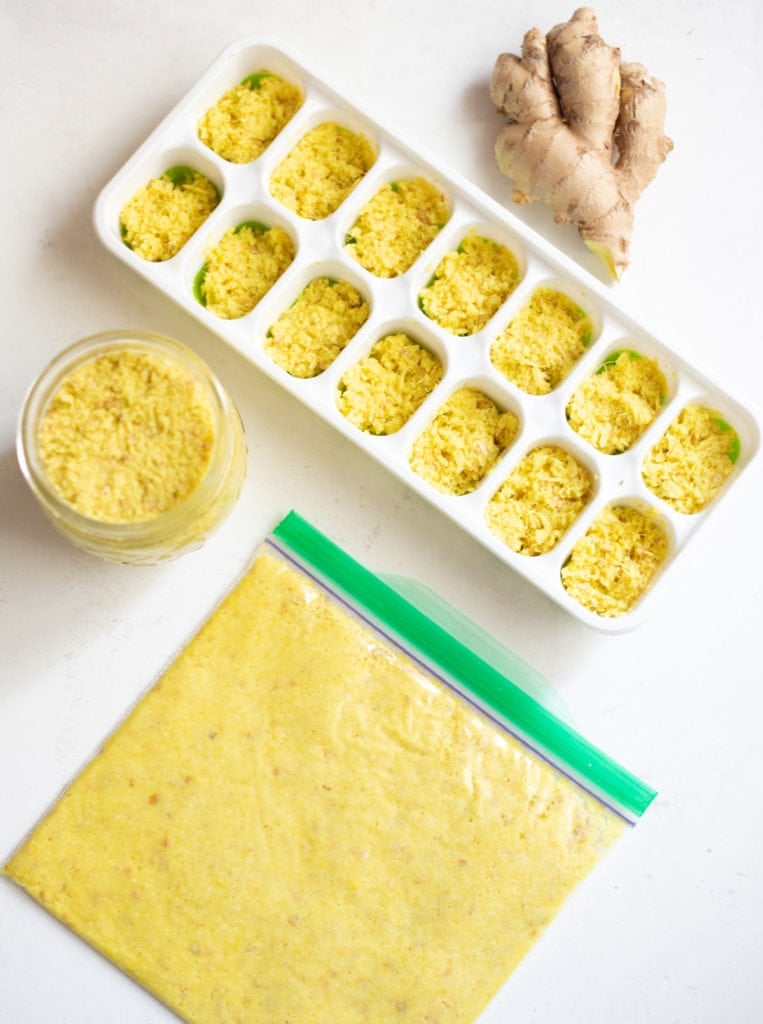
Ginger is a spice that comes with a whole lot of health benefits. Right from curing nausea to a sore throat, it is a great remedy. It also contains gingerol, that has powerful anti-oxidant and anti-inflammatory effects. Ginger is one of the most delicious and healthiest spices.
It is a staple ingredient in my cooking right from my morning chai to meal prep curry sauce. In fact, Ayurveda calls this spice as “Hridya or the Heart- friendly herb” as it prevents the clogging of arteries and improves blood circulation. Overall, Ginger is a great immunity booster.
I shared before how you can cut ginger in various ways to use in any recipe. In this post, you will learn how to buy and store ginger the right way.
What is Ginger?
Ginger is known as Adrak in Hindi and it is a must-have spice in Indian cooking. It has a pungent aroma with a woody flavor. Ginger has a slightly brown outer layer with yellow to tan inner flesh. It also has a zesty, sweet yet warm and spicy taste.
Ginger pairs well with a broad range of flavors starting from sweet to spicy. It pairs well with baked goods while giving out an exotic aroma. Also, it adds the right amount of heat and zing in savory dishes. When added to beverages, ginger gives out a spicy and warm flavor that soothes our throats right from the first sip.
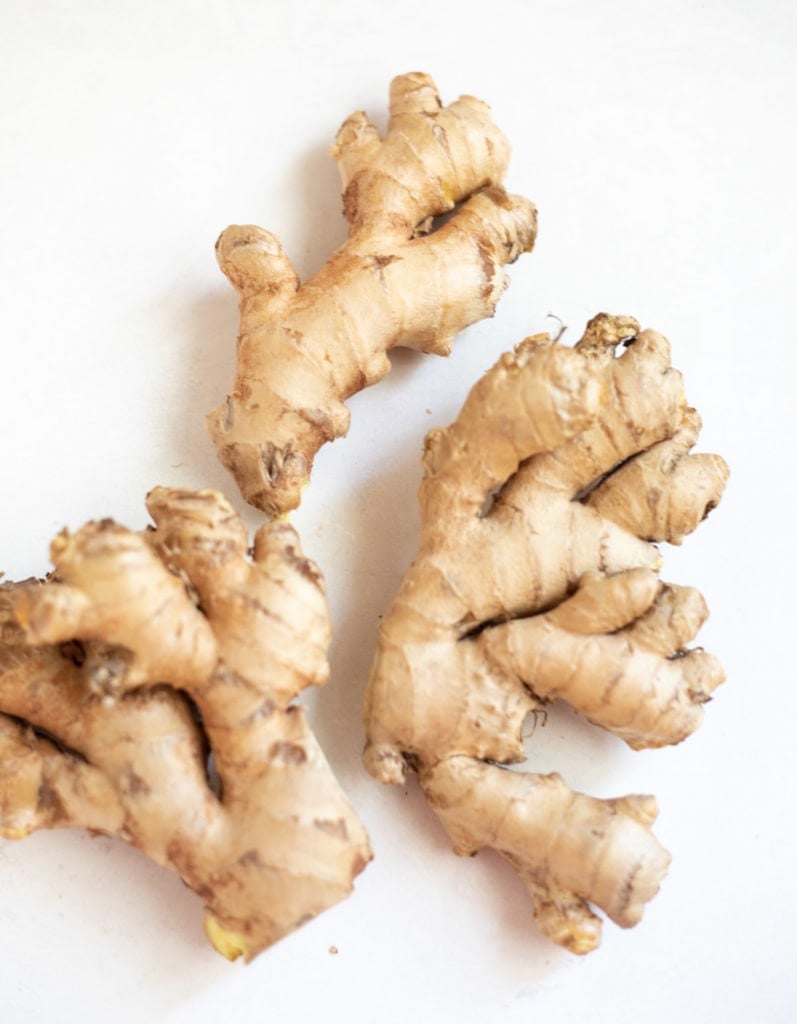
Ginger is a gnarled root quite uneven in shape and texture. The hand of ginger has many protrusions as shown in the picture above. The protrusions are usually referred to as knobs of ginger.
Sometimes you might find recipes call for a knob of ginger. Consider it to be about 5 centimeter or 2 inches long. A thumb of ginger is considered about an inch long.
Alternatively, you can also use ginger powder if you are out of fresh ginger. However, you cannot substitute it as an equal measure of fresh ginger. Use about 1/4 teaspoon ginger powder for 1 tablespoon fresh ginger. When cooking you can it them just like you would add the other spice powders.
Health Benefits of Ginger
Ginger is a spice that has so many wonderful health and medicinal benefits:
- It has anti-inflammatory and anti-bacterial properties
- It helps in alleviating morning sickness and nausea
- Ginger helps in improving digestion and prevents gas build-up
- It is a staple remedy for cold and flu across the world
- It is a good source of anti-oxidants
Where to Buy Ginger?
You can buy ginger at your local Indian grocery store. This is usually sourced from China, and the ginger is bigger in size, than what you might have seen if you grew up in India.
You can also find organic ginger at stores such as Costco, Trader Joes, or Whole Foods. It is quite similar in size and taste to what is used in India. I prefer to get this organic ginger, as it has more zing and flavor to it. There is also the added plus that I can also skip peeling if it is organic ginger root.
I typically buy the large bag of organic ginger from Costco, as I use it a lot in my cooking and morning tea. I use the various ways mentioned below to make sure it stays fresh and can be used for a long time.
How to Store Fresh Ginger?
Fresh ginger root can be stored in the refrigerator or in the freezer. You can either store it as a whole root or as a ginger paste. But before doing either of these methods, you need to first wash the root in running water. You can air-dry by leaving it out on the kitchen counter or wipe it well with a kitchen towel.
Storing Ginger Root
If I am going to use the ginger within a week, I leave it out and store in a cool dry place.
Make sure the root is completely dry before keeping it in the fridge. If it is even a little bit wet, it will make the ginger go bad quickly. Blot it dry with a kitchen towel.
Refrigerator: If you are storing the whole root, use a resealable plastic bag and store it in the refrigerator’s crisper drawer. Don’t peel the skin if you are storing it in the refrigerator. But be sure to check for mold before using the ginger.
Freezer: To store ginger even longer, store it in the freezer. Keep it in a ziplock bag or freezer-safe container. If it is organic ginger, you can store it with the peel. Break into small pieces before freezing. You can freeze for up to 5 months.
Whenever you need ginger, just take it out of the freezer and grate it to use. Then, keep the ziploc bag back in the freezer for future use.
Don’t worry about thawing the ginger as it is easy to peel and grate when frozen.
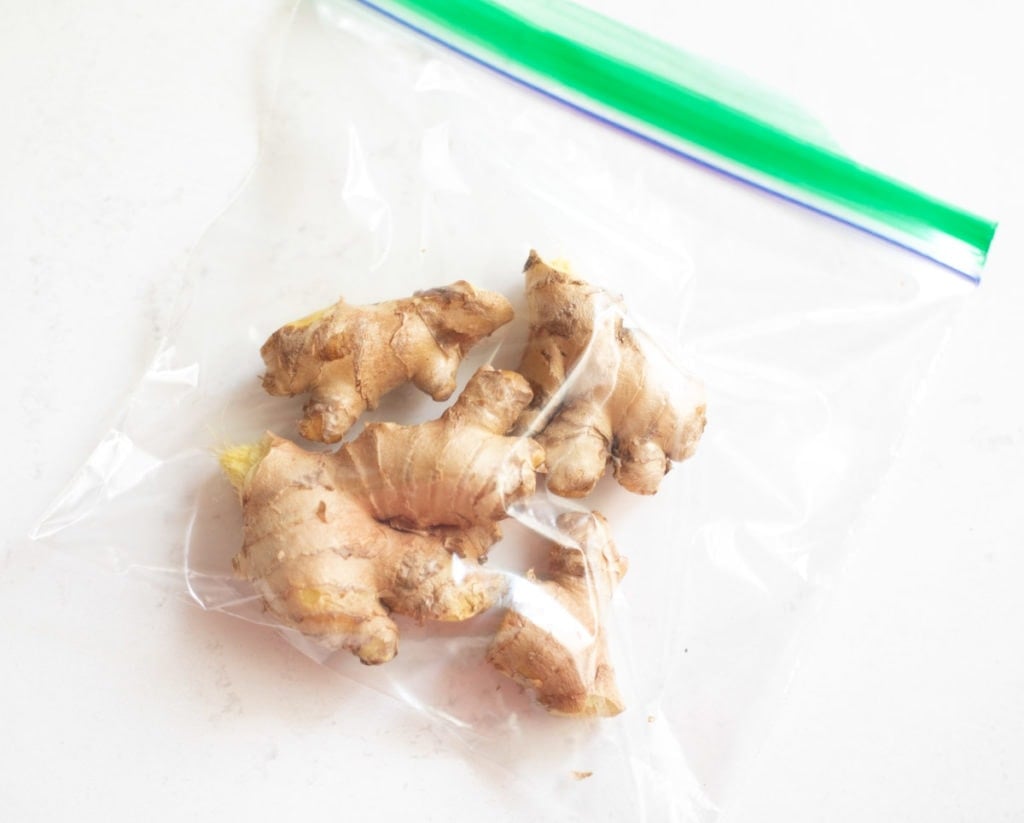
Storing Ginger Paste
Making a paste is a great way to store ginger to add while cooking. Usually, I don’t peel the skin if I am using organic ginger, but feel free to remove the skin if you prefer. Remove any jagged or bruised portions of the ginger and cut into small pieces for easier blending.
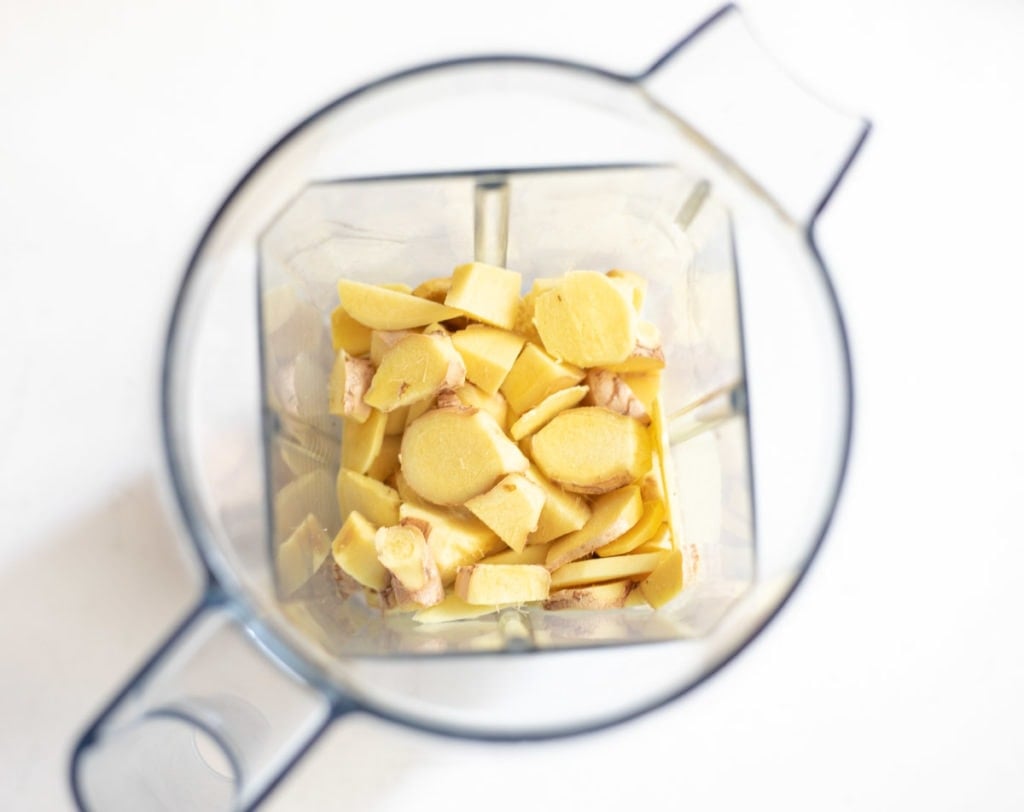
Blend the small chopped pieces of ginger to a paste using a blender or food processor. You can grind it as coarse or fine paste as you like. As ginger also has water content, you don’t need to add water while grinding. But, if it is needed just add very less maybe a spoonful to blend the ginger. While blending, the ginger will rise up, so keep pushing it down to make blending easy.
To make ginger paste in a blender, you might need to use a larger quantity. Blending in small quantities might end up needing more water or you might end up getting a very coarse blend.
Do we need to add oil and salt to preserve ginger paste?
If you plan to freeze the ginger paste, you don’t need to add oil or salt. This way the frozen ginger can also be used for making tea or in baking.
However if you want to store the ginger paste in the refrigerator and only plan to use it in curries, then it is totally fine to add oil and salt to it.
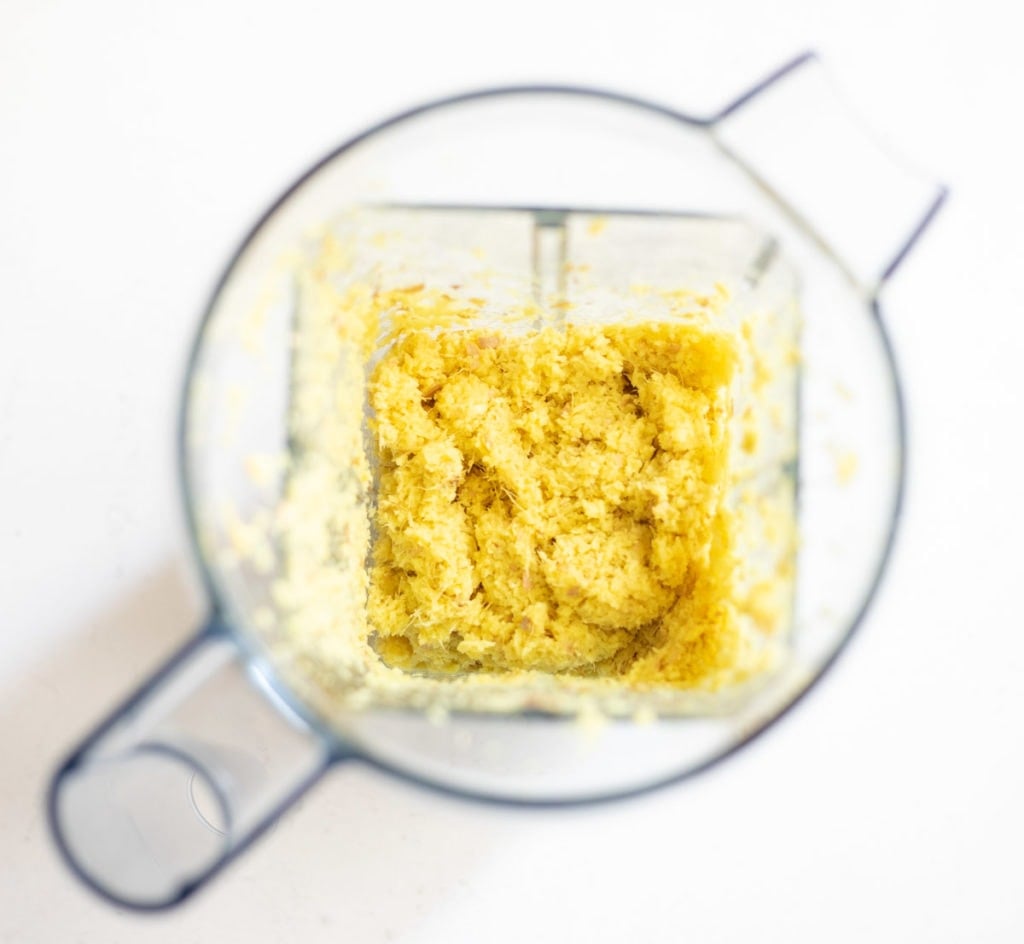
Once the ginger paste is ready, you can store it in an air tight container in the refrigerator for up to 3-4 days.
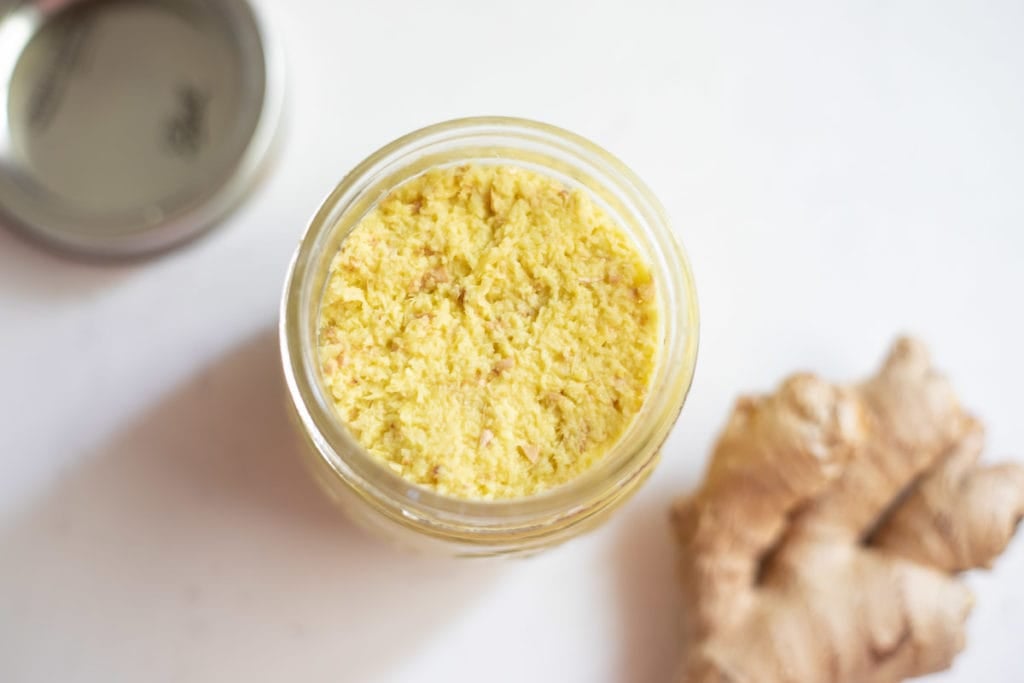
To keep it even longer, store the paste in the freezer. I use ice-cube trays with a lid to store the ginger in the freezer. The tray holds about a tablespoon of ginger in each cube. You can also just fill the cube half to have 1/2 tablespoon, which can be perfect to use in most recipes.
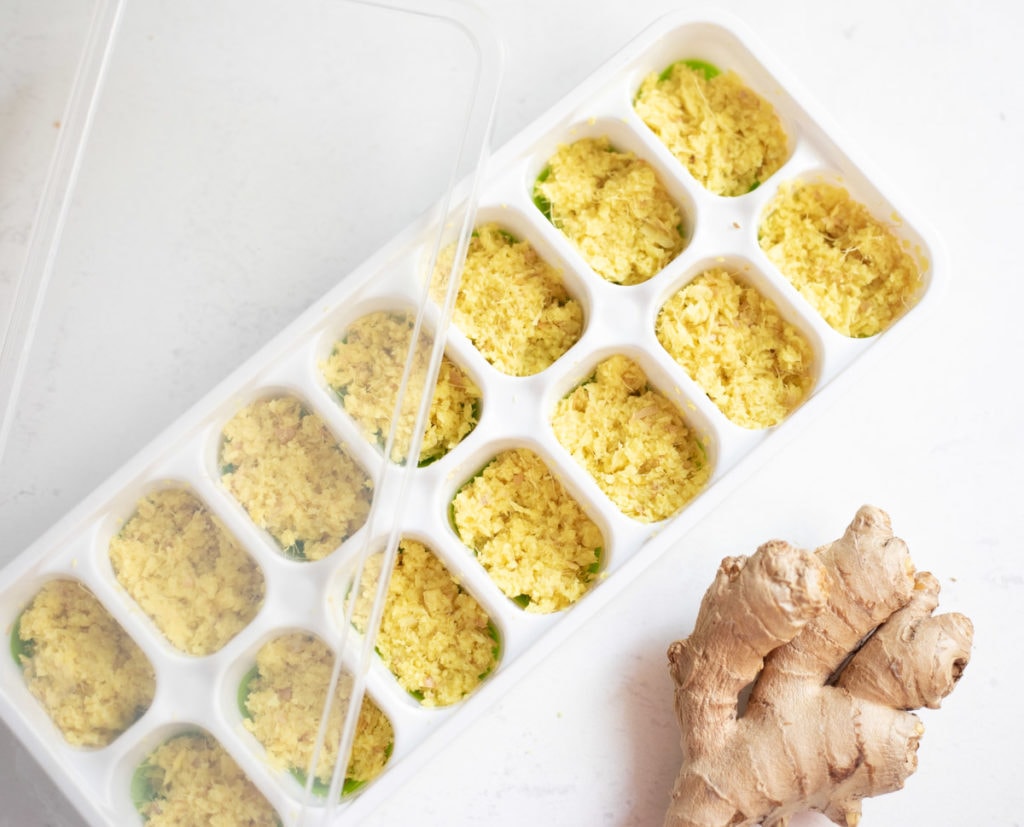
You can also use Ziploc bags to store the paste if you don’t have ice-cube trays. Add the ginger paste and flatten the bag as shown below. This way you can break easily the amount you need for cooking.
You can freeze ginger paste this way for up to 5 month.
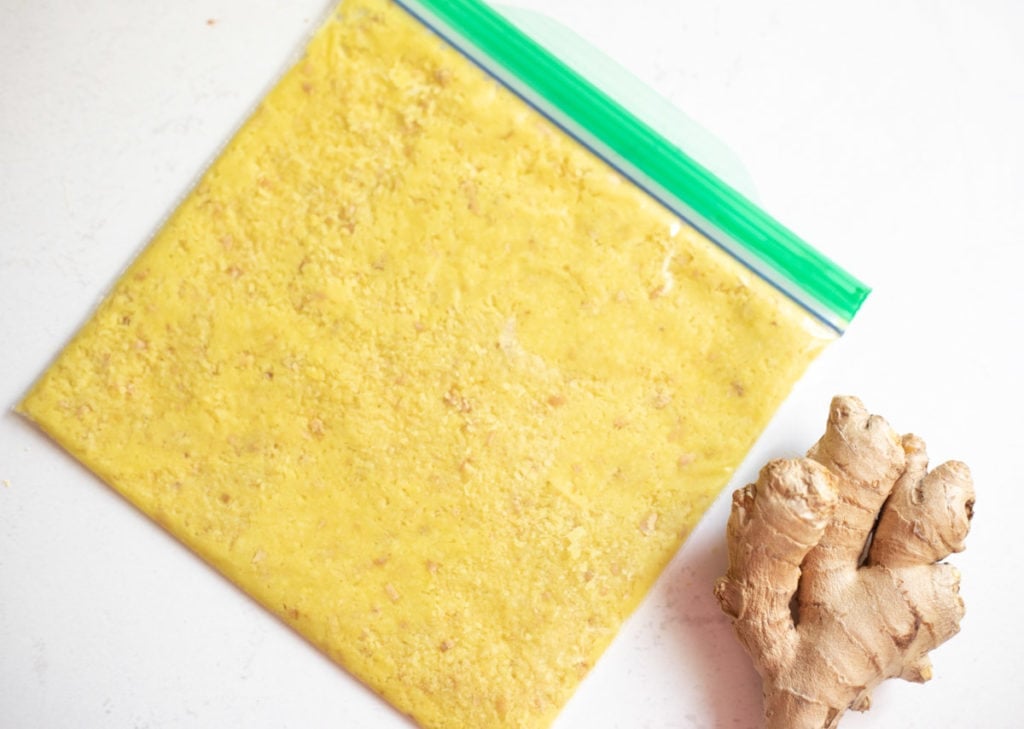
Or if you want, line a sheet pan with parchment paper and add a dollop of ginger paste in a row and freeze them. Then store those mounds in a ziploc bag and remove as much as air as possible before sealing and storing the bag in the freezer.
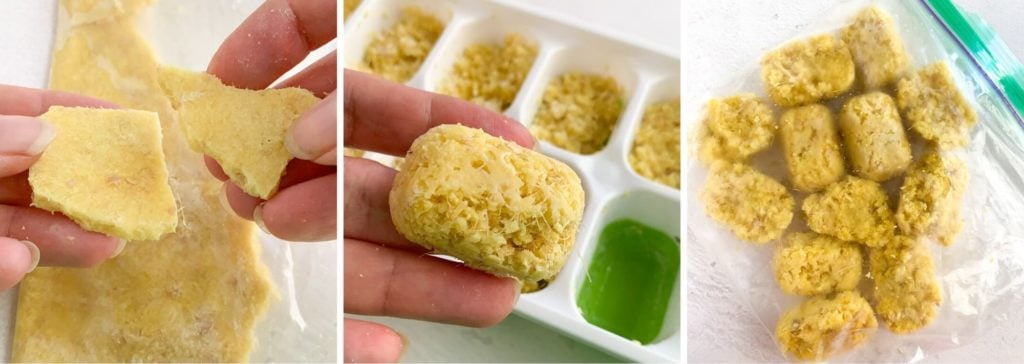
You can see above how easy it is to use the frozen ginger from the ziploc bag bu breaking it in to small pieces.
You can save space by removing the ginger cubes from the ice cube trays and storing them in a resealable plastic bag.
I hope you have found this post helpful to learn the various ways you can store ginger. When I get a large bag of ginger, I keep some in the refrigerator, and make a paste with the rest and freeze for later.
You might also like my other Cooking 101 posts to learn how to store green chilies, cilantro or curry leaves.

How to Store Ginger?
Equipment
Ingredients
- 1 pound Fresh Ginger Root
Instructions
Clean Ginger
- Wash the ginger root under running water and remove all the dust and debris
- You can air-dry by leaving it out on the kitchen counter or dry it well with a kitchen towel.
Store Ginger Root
- If you are going to use the ginger root within a week, leave it out and store in a cool dry place.
- To store in the refrigerator, put the ginger root in a resealable plastic bag and store it in the crisper section. Don't peel the skin if you are storing it in the refrigerator. But be sure to check for mold before using the ginger.

- To store ginger even longer, store it in the freezer. Keep it in a ziplock bag or freezer-safe container. If it is organic ginger, you can store it with the peel. Break into small pieces before freezing.
- Whenever you need ginger, just take it out of the freezer and grate it to use. Then, keep the ziploc bag back in the freezer for future use. Don't worry about thawing ginger as it is easy to peel and grate when frozen.
Store Ginger Paste
- Remove the jagged or bruised portions of the ginger and cut into small pieces.

- Blend the chopped pieces in a blender to a course or fine paste. Try to add as little water as possible.

- Once the ginger paste is ready, you can store it in an air tight container in the refrigerator for up to 3-4 days.

- To store in freezer, use ice-cube trays with a lid to store the ginger in the freezer. The tray holds about a tablespoon of ginger in each cube. You can also fill the cube half to have 1/2 tablespoon, which works for most recipes.

- You can save space by removing the ginger cubes from the ice cube trays and storing them in a resealable plastic bag.

- You can also use Ziploc bags to store the paste if you don't have ice-cube trays. Add the ginger paste and flatten the bag to a thin layer as shown below. This way you can break easily the amount you need for cooking.

- Another way is to line a sheet pan with parchment paper and add a dollop of ginger paste in a row and freeze it. Then store those mounds in a ziploc bag and remove as much as air as possible before sealing and storing the bag in the freezer.



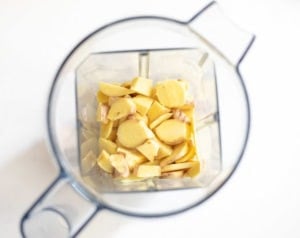
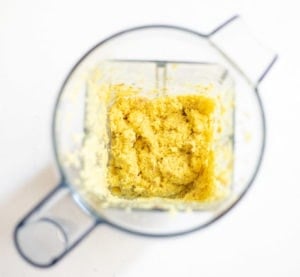
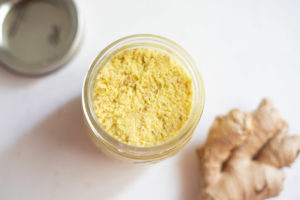
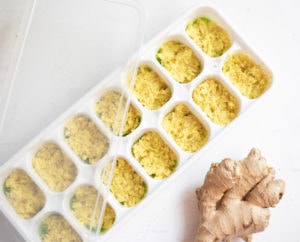
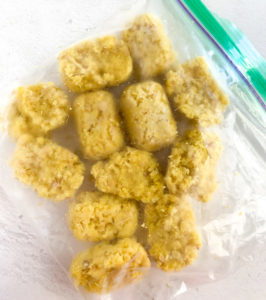
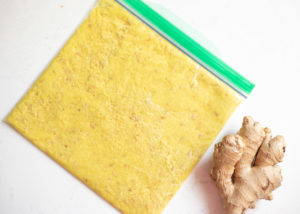
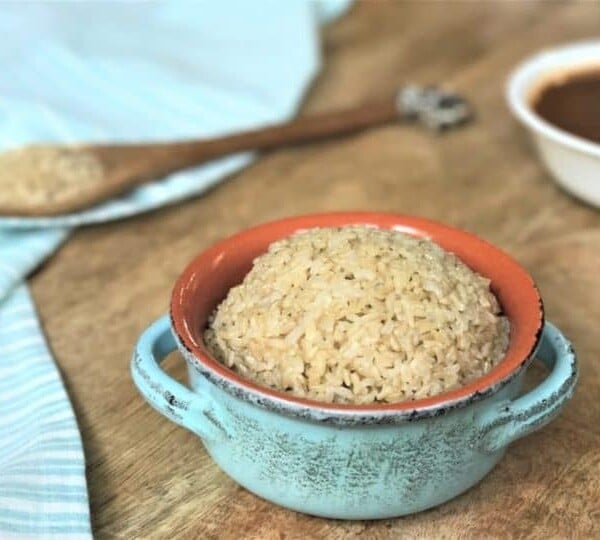
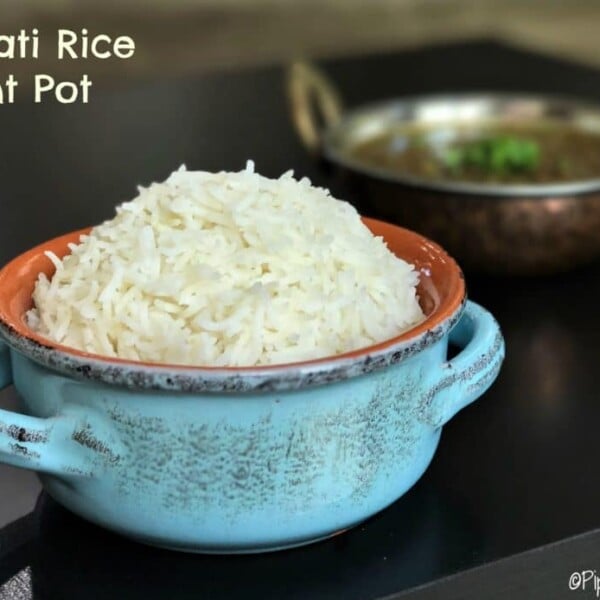

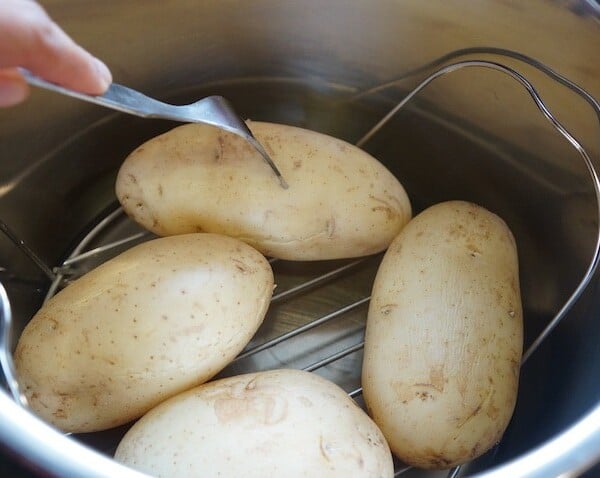








I take ginger for stomache problems and make a paste to put on my gout. You have to be careful
not to leave it on your body for long periods of time , as it can leave blisters on you. It is extremely good in giving gout relief.
I have been storing the hands and/or knobs in the zip bag as you have shown, but find it so hard to judge exactly how much to break off for a recipe, and find every time that I have a bit over and it’s to small to keep, and is mostly thawed by the time I have grated it and don’t want to refreeze it a second time. What a wonderful idea to blender paste it and freeze in the tray by TBSP. & tsp. Thanks for the tip!! Found you on Pinterest.
Happy to hear you found the post helpful. Thank you for sharing. Glad to hear you found about my blog on Pinterest.